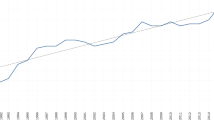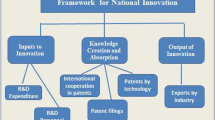Abstract
Developing countries share disbelief about the benefits of the endogenous production of science as a tool for economical growth. Hence, public policies to strengthen science and technology and promote the culture of innovation are, in general, weak and sometimes incoherent.
Patenting has become not only an icon to protect discoveries which can yield profits and enable socio-economical growth but also a potent informetric tool to assess innovation and certainly, since the seminal work of Narin, to understand the multidimensional interactions between science, technology and innovation.
In this article we examine the impact of Chilean research articles on world technology as viewed by the link between articles produced in Chile and US patents. Our results show that from 1987 to 2003, 509 US patents had 562 citations to 273 articles produced at least, by one author working in a Chilean institution. US, not Chilean companies are the holders of patents citing Chilean produced articles. The research articles covered many disciplines but a clear concentration occurred in the biomedical field. Additionally, chemistry was also well cited.
Our results confirm that in Chile a non-patenting culture which involves researchers and institutions still prevails. Hence, public policies need to be designed and implemented to foster scientific production and innovation in order to advance progress in the current knowledge-economy-driven society which sustains competitiveness in the globalized world.
Similar content being viewed by others
References
Atallah, G., Rodriguez, G. (2006), Indirect patent citations, Scientometrics, 67: 437–465.
Benavente, J. M. (2005), Innovación Tecnológica en Chile: Dónde estamos y qué se puede hacer, Economia Chilena, 8: 53–74.
Brainard, J. (2005), The Ghosts of Stanford. Have federal constraints on reimbursing overhead for research grants gone too far? Chronicle of Higher Education 51: A16.
Carpenter, M. P., Cooper, M., Narin, F. (1980), Linkage between basic research and patents, Research Management, 23: 30–35.
Chen, Y., Puttitanun, T. (2005), Intellectual property rights and innovation in developing countries, Journal of Development Economics, 79: 474–493.
Eyzaguirre, B., Foulon, C. L, Hinzpeter, X. (2000), Los Chilenos no entendem os lo que leemos. Puntos de Referencia. Centro de Estudios Públicos, Santiago, Chile, July 2000.
Gupta, V. K. (2006), References to literature in patent documents: A case study of CSIR in India, Scientometrics, 68: 29–40.
Iversen, E. J. (2000), An excursion into the patent-bibliometrics of Norwegian patenting, Scientometrics, 49: 63–80.
Krauskopf, M. (2003), Indicadores cuantitativos de los doctorados conferidos en el país ¿Falta de atención o expression de subdesarrollo? In: Calidad en la Educación, Estudios de Postgrado. Perspectivas y desafios. CSE, Santiago, pp. 47–59.
Mendez, B. (2005), La Moda de las Patentes, Bioplanet, 34: 18–21.
Meyer, M. (2000), What is special about patent citations? Differences between scientific and patent citations. Scientometrics, 49: 93–123.
Meyer, M. (2006a), Measuring science-technology interaction in the knowledge-driven economy: The case of a small economy, Scientometrics, 66: 425–439.
Meyer, M. (2006b), Knowledge integrators or weak links? An exploratory comparison of patenting researchers with their non-inventing peers in nano-science and technology, Scientometrics, 69: 545–560.
Meyer, M., Pereira, T. S., Persson, O., Granstrand, O. (2004), The scientometric world of Keith Pavitt. A tribute to his contributions to research policy and patent analysis, Research Policy, 33: 1405–1417.
Narin, F., Hamilton, K. S., Olivastro, D. (1997), The increasing linkage between U.S. technology and public science, Research Policy, 26: 317–330.
Narin, F., Noma, E. (1985), Is technology becoming science? Scientometrics, 7: 369–381.
Tokman, M., Zahler, A. (2004), Innovación para un crecimiento sostenido: Siete lecciones para Chile, En Foco, 17: Expansiva, Santiago.
Tussen, R. J. W., Buter, R. K., Van Leeuwen, Th. N. (2000), Technological relevance of science: An assessment of citation linkages between patents and research papers, Scientometrics, 47: 389–412.
Author information
Authors and Affiliations
Corresponding author
Rights and permissions
About this article
Cite this article
Krauskopf, M., Krauskopf, E. & Méndez, B. Low awareness of the link between science and innovation affects public policies in developing countries: The Chilean case. Scientometrics 72, 93–103 (2007). https://doi.org/10.1007/s11192-007-1737-5
Received:
Published:
Issue Date:
DOI: https://doi.org/10.1007/s11192-007-1737-5




